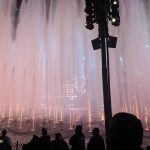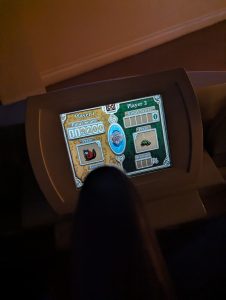Year: 2023
MapIndiewebifying a WordPress Site – 2023 Edition
We could always use more contributors to IndieWeb plugins, and there is so much to do. One of the biggest problems is probably that many community members, but not all, prefer classic WordPress to the current Gutenberg block editor, and this does hinder individuals who want to use the latest and greatest. For me, I just am not as interested in writing Javascript vs PHP code.
So, to summarize some things from last year, what has changed, and what is in the future.
The IndieWeb plugin offers an h-card template and widget. This would be the perfect place to add a block option if a contributor was interest. It adds tools to help you show your identity, and suggests other IndieWeb plugins you might try. Sort of a Jetpackesque idea.
It offers rel-me links, either visible or hidden. Now, other sites are using rel-me again…Mastodon, Pixelfed, etc. This allows them to also verify distributed identity…that one URL and another URL are the same person because they link to each other with links marked up with rel=”me”.
IndieAuth doesn’t have many new features to add, but it continues to be refined and improved for improvements under the hood. It allows you to log into a WordPress site using an IndieAuth endpoint…most commonly another IndieAuth enabled WordPress site, or for a client application to get a token to act on your behalf…most commonly a Micropub client.
Micropub, which is a plugin I intend to do some work on in the near future, allows you to publish content to your site using a Micropub client. The advantage of this is the Micropub server(built into the plugin), converts the Micropub vocabulary into a WordPress post. So there can and are a variety of bespoke applications that allow you to post any number of content types.
Webmentions, completing a long project, hit version 5.0 in April. The 5.X branch is a merging of the Semantic Linkbacks plugin and the Webmentions plugin, with a completely rewritten and updated codebase. The way webmentions were implemented prior to 5.0 was a direct copy of pingbacks and trackbacks. We have and continue to move away from that.
The IndieWeb is built on parsing of Microformats. Microformats are a specific and simple markup to HTML that allows a parser to gain context…and therefore render a reply, like, link preview, etc. The new Webmentions plugin has several fallbacks of less fidelity now, still favoring Microformats. If it is a WordPress site, it will try to render the information from the WordPress REST API. If it isn’t, it will try to get basic information from JSON-LD or meta-tags…This basic information is a summary, author(image and URL), etc.
Brid.gy, the service that bridges other sites to yours via Webmention and Micropub, has added some Bluesky support. Brid.gy Fed had come on to allow your site to interact with ActivityPub supported sites(like Mastodon).
WordPress has its own ActivityPub plugin, created and maintained primarily by the creator of many IndieWeb plugins, Matthias Pfefferle. I’m not personally involved in that as a contributor(he has more than enough interest elsewhere), but I’m a user of it.
Syndication Links displays links to other versions of a post..on any arbitrary site. It supports integrations with Bridgy and others to trigger the syndication to that other site.
A few other useful plugins….
- Simple Location – if you want to add location awareness to posts, and static maps, this supports it and integrates well with other IndieWeb plugins, because I wrote it.
- Tempus Fugit – A collection of time based website tweaks, such as adding This Day and This Week URLs and features.
If you do want to experiment with Blocks and the IndieWeb, you can try Jan Boddez’s Indieblocks.
If you prefer the Classic Editor, I still maintain the Post Kinds plugin for myself and others.
IndieAuth for WordPress 4.4.1 Released
- Email notifications for incoming tickets if using the experimental Ticket Endpoint
- Microformats parsing for client information discovery
- Misc. Fixes
Disney’s introduction of MagicBand technology was a massive change for the theme park. The overall system began development in 2008, with the idea of reducing friction in the park, and the over $1 billion dollar project to integrate technology at Disney parks culminated with a rollout a decade ago in 2013. I remember the first…
So I Finally Got COVID
It was a surprise to many people, including me. And to be honest, despite keeping up on things, I’m not an expert. I keep asking myself what chain of events led to this, but I’ll likely never figure out.
The incubation period of COVID is such that during the period I could have gotten it I was on a plane(and no one sat in the seat next to me), a train(also no one next to me), and walking around outside. Could I have been too close to someone when I took an outdoor mask break? Maybe. Who knows?
As of now, people who were close to me when I subsequently calculated I was probably contagious have not reported getting ill themselves. That was also hard for me to determine. I’ve had every COVID booster, which is supposed to reduce symptoms. And the symptoms felt like a sinus infection…which I get multiple times a year. I sniffle all year round, and there were several people where I was reporting sinus issues because of pollen that was flying around, so I made an assumption.
So, this gets to the…what do I learn from this? I’m still not sure. I don’t know how often I should test when I feel no symptoms. I didn’t go to anything when pre-testing was common etiquette. It clearly isn’t now for most people. So, I have come up with a few possible asymptomatic testing ideas and am trying to decide which to adopt.
- Test after any plane flight or similar as a confined space with close contact.
- Test before and after any gathering. Gathering being in close contact with a group of people for an extended period. Before to ensure not spreading anything unknowingly.
- Test after being in an outdoor space with other people for an extended period of time.
- Assume any respiratory illness or distress could be COVID and test.
So, I have been in isolation for 5 days as of tomorrow. The CDC has a page of advice on this. If you had symptoms, Day 0 is the day of symptom onset, regardless of your first test. Day 1 is the first full day after the symptoms start.
They advise staying at home for 5 days and isolating from others. You can end isolation after 5 days if you have no symptoms or if you have been fever free for 24 hours after Day 5.
Regardless of when you end isolation, you are supposed to, until Day 11, avoid being around high risk individuals and wear a mask. I got stuck in my parent’s guest room, and they are high risk individuals, so we’ll see what I figure out. They note that with two sequential negative tests 48 hours apart, you may remove your mask sooner than day 10.
There is also the risk of COVID Rebound. COVID rebound is defined as a recurrence of COVID symptoms and/or receiving a positive COVID test after having the disease and then testing negative. It has been reported to occur between two and eight days after initial recovery.
Of course, all of this is the advice of the US CDC. I checked the UK’s NIH website, and they don’t say anything about masks. The Canadian authorities state you should stay home until you experience no symptoms, and then wear a mask for 10 days. No wonder I’m confused.
I’m also trying to figure out the issue of cleaning…again for the benefit of high risk individuals. I have laundry piling up, and this building has a shared laundry room. So, how long before I put any laundry in? Do I disinfect the machine after? How? What do I do with things and surfaces I touched? The information on how long the virus might stay on a surface is somewhat varied. However, the general agreement is that the chance of catching COVID through surface contact is slim. Still want to clean everything though.
As an analytical person, I want to refine my behavior as a result of this, but I’m not sure exactly how. What do others think?



































































